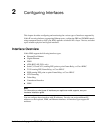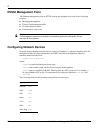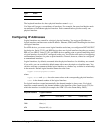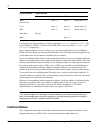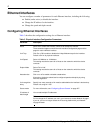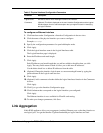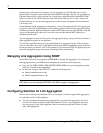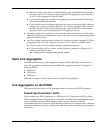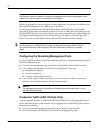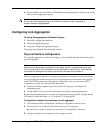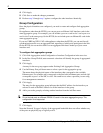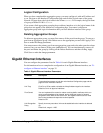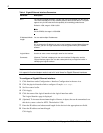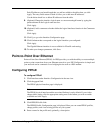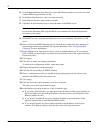
Nokia Network Voyager for IPSO 4.0 Reference Guide 37
When you assign switch ports to an EtherChannel group, set the channel mode to on to
force the ports to form a channel without using the Link Aggregation Control Protocol
(LACP) or Port Aggregation Protocol (PAgP).
If your switch supports it, configure the aggregated ports to distribute the traffic using
source and destination IP addresses.
If your switch can only distribute traffic based on source or destination MAC addresses,
configure it to use the source MAC addresses. If it uses the destination MAC address to
distribute the load, all the traffic flowing from the switch to the IPSO system over the
aggregated link is sent to the primary port of the aggregation group.
You must configure the switch ports to have the same physical characteristics (link speed,
duplicity, autoadvertise/autonegotiation setting, and so on) as the corresponding aggregated
ports on the Nokia system.
On Cisco switches, trunking must be enabled if you create more than one tagged VLAN on
an aggregated link. (You can configure as many as 1015 VLANs for an IPSO system.).
If you use IOS on a Cisco switch, trunking is enabled automatically.
If you run CatOS on a Cisco switch, use the following command to configure VLAN
trunking on the EtherChannel:
set trunk ports nonegotiate dot1q vlans
Static Link Aggregation
The IPSO implementation of link aggregation complies with the IEEE 802.3ad standard for
static link aggregation. Nokia has also tested IPSO link aggregation with the following Cisco
Catalyst switches:
6500 Series
3550 Series
2950 Series
IPSO does not support LACP, which is used for dynamic link aggregation.
Link Aggregation on the IP2250
This section describes aspects of link aggregation that are specific to the IP2250 appliance.
Firewall Synchronization Traffic
If you configure two IP2250 appliances in a VRRP pair or IP Cluster and run NGX on them,
Nokia recommends that you aggregate two of the built-in 10/100 Ethernet management ports to
create a 200 Mbps logical link and configure NGX to use this network for firewall
synchronization traffic. If you use a single 100 Mbps connection for synchronization, connection
information might not be properly synchronized when the appliance is handles a large number of
connections.



